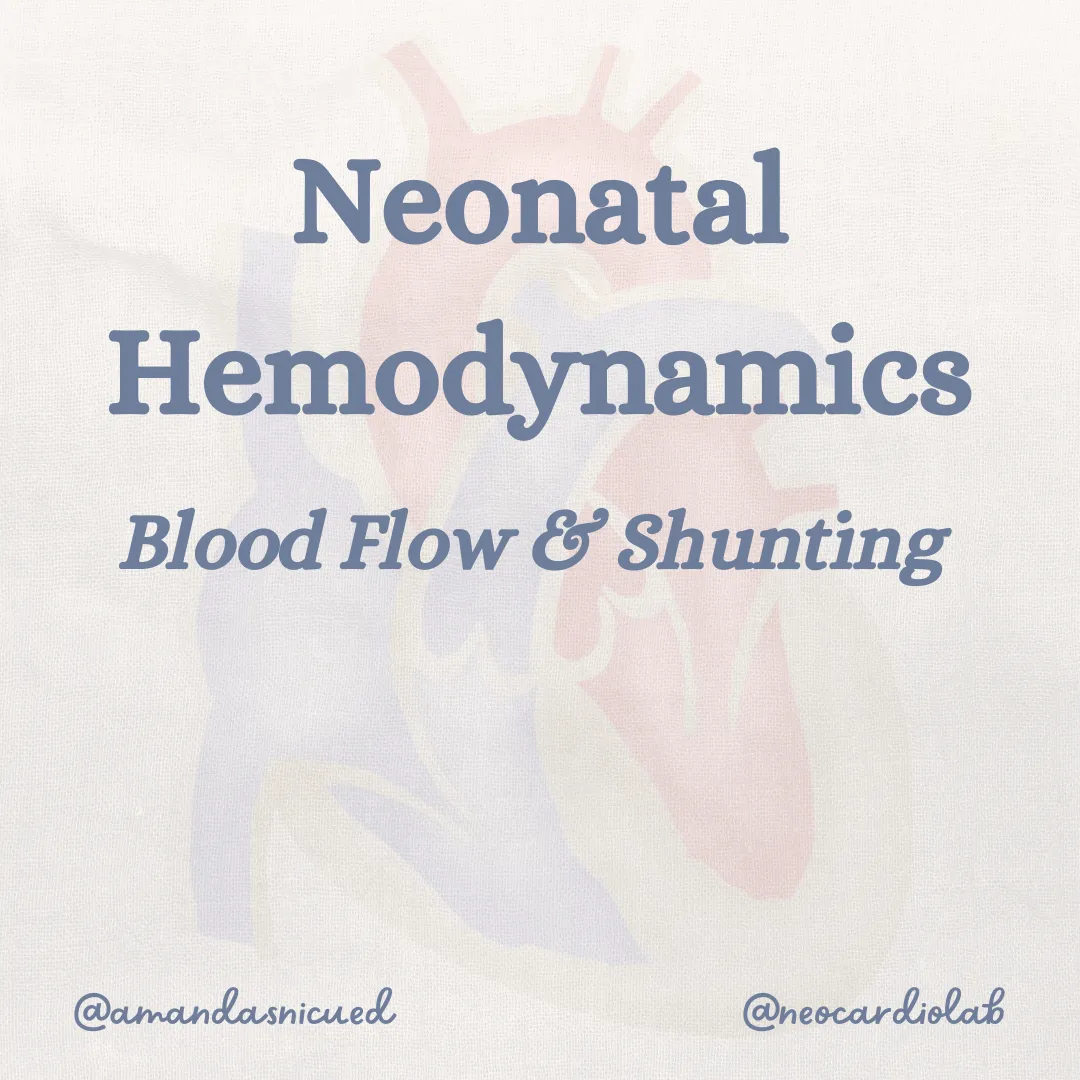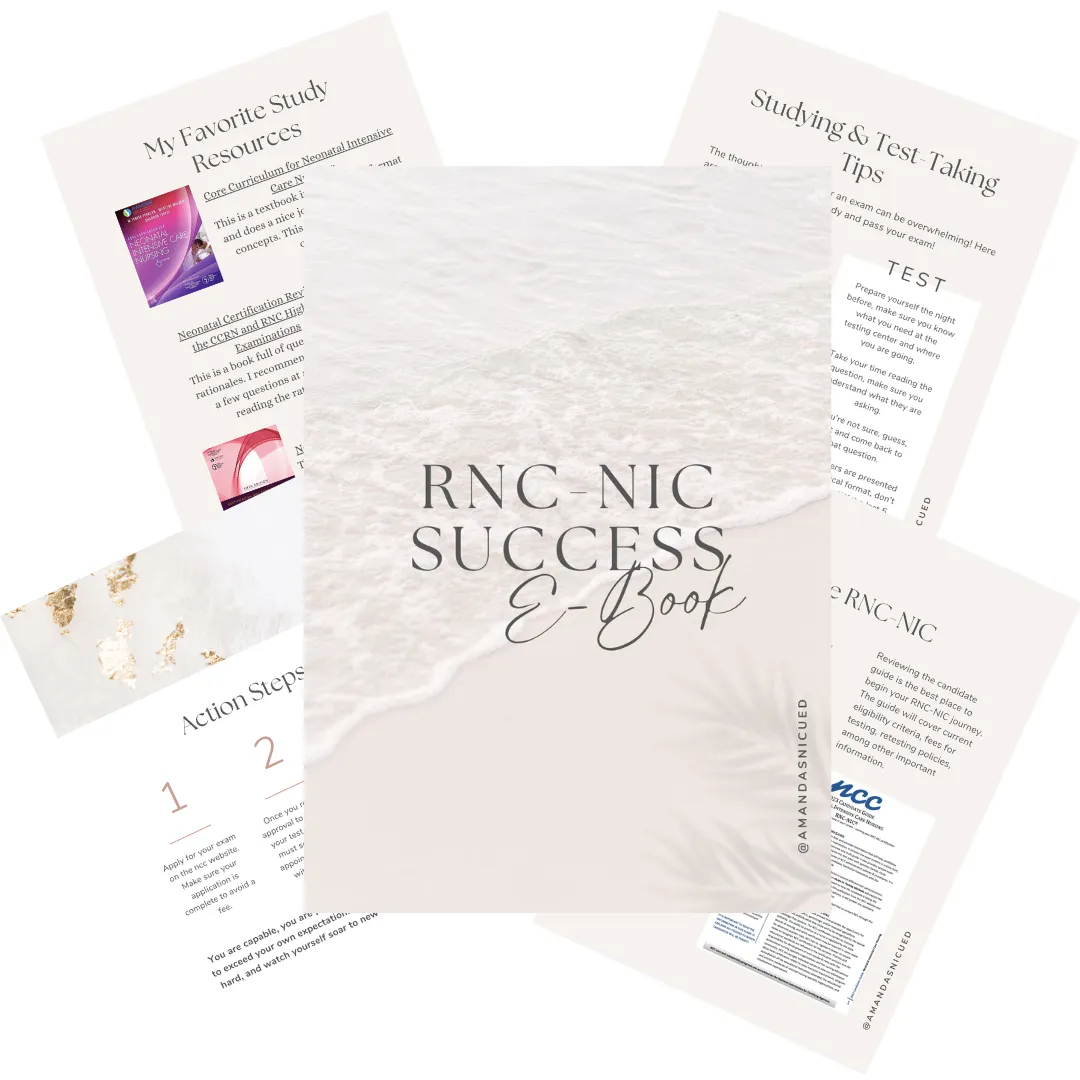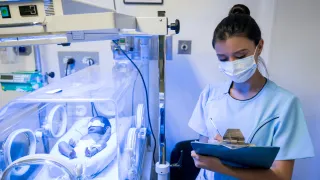
Welcome to Amanda's NICU Education




Hi! My name is Amanda. I'm a NICU nurse, Clinical Nurse Specialist, NICU Educator... basically your NICU BFF. If you want to talk NICU, I'm here for you! I love everything about NICU nursing and I'm eager to learn and share my knowledge with all my NICU friends.
I have been a NICU nurse since 2009 I am currently a Clinical Nurse Specialist in a Level IV NICU in Los Angeles.
I am passionate about educating the next generation of NICU nurses. I share my knowledge through platforms such as Instagram and Facebook and am excited to have you here on my website!
Click on the button below to sign up for my newsletter filled with NICU education and tips for all experience levels.

Not very many people love taking tests but as a self-acclaimed "forever student" who has taken (and passed) five different certification exams I am no longer afraid of tests! "Way to brag", you might be thinking but I want to help YOU pass your certification exam too!
Introducing Amanda's RNC-NIC Success digital course - your ultimate study companion!
Gain unlimited, on-demand access for life, ensuring you're primed to ace your certification exam.
I'm here to help you succeed and I can't wait for you to share with me that you PASSED the RNC-NIC EXAM!!!










Neonatal Hemodynamics
I’m so excited for this weeks newsletter. It’s a great topic that many of you have reached out to me about. Even after 15+ years in the NICU, I still get confused about hemodynamics sometimes. So I reached out to the amazing Dr. Gabriel Altit from @neocardiolab! If you haven’t yet, check out his amazing website at www.neocardiolab.com and on instagram!
This week we are going to talk all about hemodynamics and cardiac function! What makes blood flow the way it’s supposed to and what interferes with that? Let’s break it down together…

Understanding Neonatal Hemodynamics:
Let’s start with what influences blood flow and cardiac shunting. Blood flow is directly related to blood pressure (BP) and inversely related to systemic vascular resistance (SVR). Changes in cardiac output (CO) and SVR determine BP. Here are two key rules to remember:
Blood flow always follows the path of "least resistance."
Two connected chambers will equalize pressure if the connection is not restricting flow/pressure transmission.
For example, in a patent ductus arteriosus (PDA), blood shunts from left to right ( systemic to pulmonary) if systemic vascular resistance is higher than pulmonary vascular resistance. Think of pressure as a function of flow and resistance: if the duct is large and unrestrictive, the flow will be driven by resistance to equalize pressure on both sides of the ductus.
The same concept applies to any connections. For instance, an inter-atrial shunt will move from the right atrium (RA) to the left atrium (LA) when RA pressure is higher due to increased right ventricular (RV) end-diastolic pressure, such as with high pulmonary vascular resistance (pulmonary hypertension).

Factors Influencing Cardiac Function
Various factors can impact cardiac function in neonates. Anatomical considerations like small ventricles, ventricular septal defects (VSD), outflow tract obstructions, and valvular anomalies all play a role. The heart’s electrical activation and the availability of fuel (like oxygen and glucose) to support contractility are also crucial. Effective coronary perfusion, or blood flow to the myocardium, is another key factor.
Cardiac function is also influenced by preload (the blood flow entering the ventricles), afterload (the force the heart must pump against), and contractility (the heart's ability to contract effectively).
Extracardiac anomalies, such as pneumothorax or cardiac tamponade, and ventricular hypertrophy can also alter cardiac function by impacting filling and causing diastolic dysfunction.
Let’s Review Some Specific Conditions and Their Hemodynamic Effects
PDA: Blood flows from left to right if systemic pressure is higher than pulmonary pressure, leading to excessive pulmonary blood flow and reduced systemic blood flow. Sometimes the reduced systemic flow is referred to as a “ductal steal” because the blood is being “stolen” from the systemic side. All that extra blood flowing into the lungs causes problems like pulmonary edema making it difficult to wean off the ventilator and increased flow to the LA and LV causing more stress on the LV.
Pulmonary Hypertension: High BP in the pulmonary artery can lead to right ventricular dysfunction or failure due to prolonged increased afterload. Causes of pulmonary hypertension include persistent fetal circulation, bronchopulmonary dysplasia, abnormal pulmonary vasculature, and issues with pulmonary vein drainage. Babies with pulmonary hypertension can be very labile and if there is right to left shunting you will likely see a “split” of ~10% between your pre and post ductal saturations.
Sepsis: Sepsis causes intracellular dysfunction and anaerobic metabolism, depleting the fuel needed for cardiac function. When this occurs there is a snowball effect of issues from electrolyte imbalance and dysregulated vasodilation which compounds cardiac dysfunction. The vasodilation and “leaky” capillaries result in high systemic blood flow due to low SVR. During this state we must be very careful with volume resuscitation because there is concern that since there is already high preload, additional volume can cause harm such as resultant pulmonary edema. In addition, we may see third spacing related to the leaky capillaries. Agents such as epinephrine may be needed to support contractility and vascular tone.
Prematurity: Infants who are born premature are thrust into an environment they are not ready for. When in utero, the fetus is in a well regulated hemodynamic space (in most cases) which allows them to grow until delivery. When babies are born prematurely they have immature organ systems, limited ability to autoregulate blood flow, and fragile vessels prone to bleeding. Specific to hemodynamics and cardiac function, the premature baby has an immature myocardium, poor response to afterload, immature vasoregulatory function, and an inability to mount cardiovascular compensation. In addition, preterm babies have an immature hypothalamic-pituitary-adrenal axis, further compromising their ability to respond in times of stress.
Not only are premature babies born with immature function, the strategies we use to support them can also impact their hemodynamics. After the delivery whether we delay cord clamping or cut the cord immediately has an effect on neonatal hemodynamics. Immediately cord clamping results in a fall in preload and sudden increase in afterload.
In addition, consider the ventilatory strategies we use. An increasing mean airway pressure can impact preload and afterload, affecting overall hemodynamics.
Tips for Managing Neonatal Hemodynamics for Nurses
Gentle Handling: Minimize stress and handling to reduce hemodynamic instability.
Slow blood draws and flushes: Rapid shifts in volume is a risk for intraventricular hemorrhage. Never rapidly withdraw blood or flush volume in a premature baby.
Ventilatory Support: Keep in mind the impact on intrathoracic pressure and right atrial pressure. Support the babies ventilation by ensuring the airway is clear, the apparatus is secured correctly in noninvasive ventilation, and the baby is properly positioned allowing for easy ventilation.
Delayed Cord Clamping: Studies show this can enhance hemodynamic stability and reduce the risk of intraventricular hemorrhage (IVH), need for vasopressors, inotropes, and blood transfusion.
Thermoregulation: Hypothermia causes a cascade of problems (e.g. anaerobic metabolism, vasoconstriction, right to left shunting, hypoxemia, increased respiratory distress…) that effect the hemodynamic stability of the baby. Ensure you are protecting them from evaporative, convective, conductive, and radiant heat loss.
Close monitoring: NICU nurses keep a watchful eye on the baby’s physical exam for signs of low cardiac output such as delayed capillary refill, weak or thready pulses, tachycardia, change in neurological status, and decreasing urine output.
Additionally closely monitor the blood pressure and understand what the numbers are telling us. Here’s a blog I wrote that reviews the aspects of the blood pressure and how it’s not all just about the mean.
Click here to read my blog all about BP

Let's Stay Connected!
Don't forget to follow us on Instagram for more tips and updates: @amandasnicued & @neocardiolab.
Share your experiences and join the conversation on neonatal hemodynamics!
Thank you for your dedication to neonatal care. Keep up the fantastic work!
Amanda xoxo
Missed my other newsletters? Click here to read them!
Let's Study Together! Join my Certification Course
References:
Neonatology Questions and Controversies: Neonatal Hemodynamics, Fourth Edition
Mullaly, R, El-Khuffash AF. Arch Dis Child Fetal Neonatal Ed 2024; 109; F120-F127 Retrieved from https://fn.bmj.com/content/fetalneonatal/109/2/120.full.pdf

December 2023 Certification Review Webinar
NICU Certification Review



Ready to kickstart your journey to becoming a certified NICU nurse?
Look no further!
Grab my FREE E-Book packed with essential study and test-taking strategies for the RNC-NIC.
In the E-Book I give you the resources you need including the link to access the candidate guide, several types of books to study from, some of my favorite strategies, an outline of the content you should review, and a blank calendar for you to make your study plan!
Frequently Asked Questions About the RNC-NIC exam

What is the RNC-NIC?
The RNC-NIC is a competency-based exam that tests the specialty knowledge of nurses in the United States & Canada who care for critically ill newborns and their families.
The RNC-NICU is a nationally recognized certification that recognizes the registered nurse for their specialty knowledge and skill.

Who can take the RNC-NIC exam?
Nurses can take this exam after a minimum of two years experience in the NICU caring for critically ill newborns and their families.

Which books should I use?
I'm glad you asked! There are many excellent books to help you prepare for the RNC-NIC, I gathered ande describe each of them for you in my FREE e-book.
Is there a course to help me study?
Yes! Many hospitals host their own certification course and there are a few online courses. See my RNC-NIC test taking tips E Book for more information
What happens if I don't pass the exam?
If you don't pass the exam on your first try you can try again after 90 days. You will have to reapply after 90 days and pay a retest fee. There is no limit to the number of times you can take the exam (however a candidate can only sit for the exam twice per year).

Can I make more money if I take the RNC-NIC exam and get certified?
Yes! Many hospitals provide a raise or a bonus for nurses with specialty certifications. Hospitals also typically hire at a higher base salary when nurses have a certification.

Find me @amandasnicued on these channels or Email me
hey nurses don't miss out
© Copyright 2024. AmandasNICUEd. All rights reserved. | Terms & Conditions | Privacy Policy Contact: [email protected]

